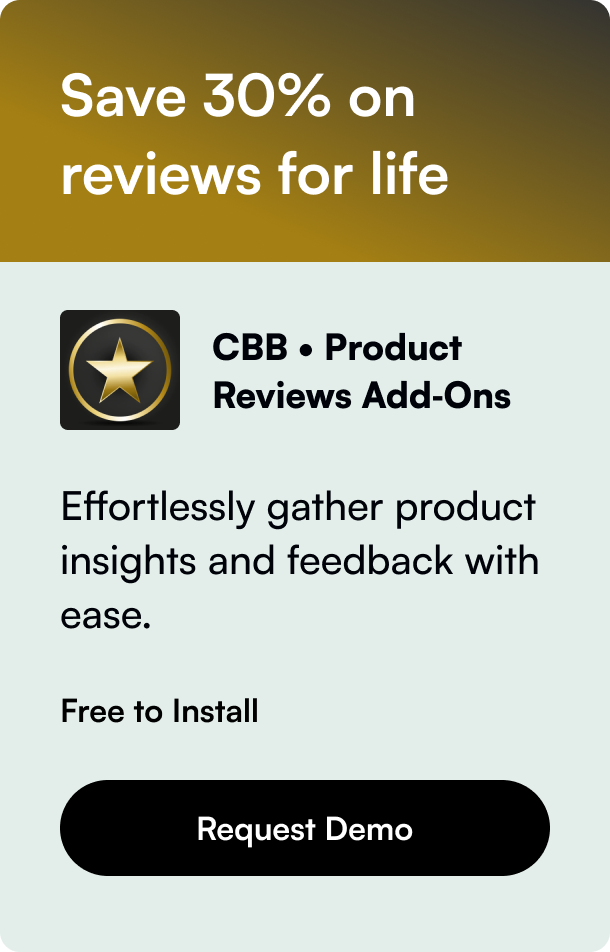Table of Contents
- Introduction
- What is Shopify, and Why Use Zoho Inventory?
- Step-by-Step Integration Process
- Advantages of Connecting Shopify with Zoho Inventory
- Bringing It All Together
- FAQ Section
Introduction
Have you ever encountered the overwhelming scenario of managing online sales, inventory, and financial details single-handedly and wished there was an easier way to handle it all? Look no further! As e-commerce businesses flourish globally, integrating your Shopify store with Zoho Inventory could be the game-changer you've been searching for. The surge in online shopping has made inventory management and streamlined operations critical for success. This blog post delves deep into the process, benefits, and nuanced dynamics of connecting Shopify with Zoho Inventory, propelling your business to new efficiency heights. We aim to unfold a roadmap that not only progresses your operational strategy but addresses how this integration can become a cornerstone of business intelligence. Journey with us as we dissect the components of interlacing two powerhouse systems, structured to leverage the strengths of both platforms to your advantage.
Integrating Shopify with Zoho Inventory is one of the strategic moves that can significantly reduce the administrative load of managing an online store. Efficient inventory management is vital for both longevity and customer satisfaction in the e-commerce sphere. Streamlining this process not only saves time but also reduces the risk of errors that can cost your business in the long run.
This article will cover the pragmatic steps to successful integration, explore the benefits it brings, and investigate common questions surrounding this process. By the end, the aim is to have equipped you with a holistic view and practical knowledge that will allow you to harness the full potential of both Shopify and Zoho Inventory harmoniously. So, let's dive in and discover how this digital symbiosis can elevate your e-commerce platform and customer service to a stellar standard.
What is Shopify, and Why Use Zoho Inventory?
Shopify provides an easy-to-use platform for setting up and running an online store. It takes care of the frontend—where customers interact and buy your products—and also offers various back-end management tools. However, when business scales up, the need for a robust inventory management system such as Zoho Inventory becomes increasingly apparent.
Zoho Inventory is an online application that allows you to track inventory levels, manage orders, and overall, automate various aspects of the supply chain efficiently. It links with various e-commerce platforms, accounting software, and CRMs, making it a versatile tool for managing the operational intricacies of an online business.
Step-by-Step Integration Process
Account Setup and Permissions: Begin by ensuring that you have active accounts on both Shopify and Zoho. Permissions might be needed to link the accounts, so make sure you have administrative access or the equivalent, ready for the necessary authorizations.
Using Zoho Integration Tools: Navigate to the Zoho Inventory settings and use the marketplace integration options to add Shopify as a channel. You will likely need to enter your Shopify store URL and provide authentication.
Simplifying Data Sync: Your products, prices, and customer data start to seamlessly sync between both platforms. The level of data sync can usually be customized based on your specific needs.
Efficient Order Management: As orders come in via Shopify, they automatically show up in Zoho Inventory. This synchronization enables you to manage all orders from a central location and have real-time visibility of your stock levels.
Streamlined Shipping and Tracking: Integrating Shopify with Zoho Inventory allows for setting up various shipping carriers. You can print shipping labels directly and track shipments until they're delivered, all from within the Zoho interface.
Financials in Sync: Connection with accounting software like Zoho Books ensures financial transactions are recorded automatically, bridging your e-commerce and accounting platforms flawlessly.
Consistent Inventory Updates: Any sale on Shopify immediately reflects on your inventory levels in Zoho, avoiding over-selling or stock shortages due to a lag in updates.
Ongoing Customization and Optimization: The integration allows you to regularly adapt the settings and synchronizations to refine and optimize your back-end operations continually.
Advantages of Connecting Shopify with Zoho Inventory
Real-Time Inventory Management
Maintaining an accurate stock count gets unwieldy quickly as your business grows. Integration alleviates this issue by providing a real-time view of inventory levels. You are primed to make informed purchasing and sales decisions without the lag that could disrupt your supply chain.
Centralized Order Processing
Receive orders from multiple channels and process them centrally in Zoho Inventory—this improves efficiency and order turnaround. This centralization also allows for better data analytics, which can identify selling patterns and optimize inventory turnover.
Automation of Mundane Tasks
Automate tasks such as order confirmation emails, stock level alerts, and reordering processes. The integration allows you to set rules and triggers that free you from the repetitive tasks that once consumed so much time.
Streamlined Financial Transactions
Connecting Shopify to your Zoho ecosystem signifies no more dual-entry for financial transactions. Every sale on Shopify is mirrored in your financial records, ensuring accuracy and giving you a clear snapshot of your business's fiscal health.
Multichannel Synchronization
For businesses selling through multiple channels, integration becomes mission-critical to maintain consistency across platforms. Prices, product details, and inventory counts stay uniform, providing a cohesive brand experience for your customers.
Enhanced Insights and Reporting
The analytics derived from an integrated system empower your business decisions with actionable insights. Customizable reports can be generated to evaluate every facet of your operations, from sales performance to warehouse efficiency.
Bringing It All Together
After fully integrating Shopify with Zoho Inventory, you will likely observe:
- Increased accuracy in stock levels and financials
- Reduced manual intervention, leading to higher productivity
- Improved customer satisfaction due to prompt order processing
- A clearer understanding of your overall business performance
Conclusion
The integration of Shopify and Zoho Inventory marks an evolution in how modern businesses manage their e-commerce operations. It exemplifies the synergistic potential when two sophisticated systems converge, creating a powerhouse for inventory management and operational harmony.
By meticulously following the integration process, embracing the benefits, and understanding the transformation it can bring to your daily commercial endeavors, you're set to stand out in the competitive e-commerce landscape. Savvy business owners who leverage these technologies relish the increased time to focus on scaling their ventures and enhancing customer relationships.
Now, let's address some real queries that might arise as you consider this significant digital collaboration.
FAQ Section
Q: Is integration between Shopify and Zoho Inventory complicated? A: The integration is user-friendly and designed to be as straightforward as possible. While there are several steps involved, each is well-guided and usually comes with support documentation. Many find that the time invested in setup pays off quickly in terms of efficiency gains.
Q: Can I select which Shopify data syncs with Zoho Inventory? A: Yes, most integration setups allow you to customize the type and frequency of data that is synced between Shopify and Zoho Inventory. This means you can tailor the integration to your specific business needs.
Q: Will integrating with Zoho Inventory impact my Shopify store's performance? A: Not at all. The integration works in the background and is engineered to have no adverse effects on your Shopify store's performance or customer experience.
Q: How does the integration help with out-of-stock situations? A: Real-time inventory updates minimize the risk of selling items that aren't in stock. Moreover, automation rules can be set to alert you when stock levels are low, prompting timely reorders and preventing stockouts.
Q: Is my financial data secure when syncing between the platforms? A: Both Shopify and Zoho Inventory prioritize data security. The information transferred during syncing is encrypted and the integrations often use secure OAuth tokens for authentication.
Whether maturing your start-up or optimizing an established online enterprise, assimilating Shopify with Zoho Inventory infuses your business model with unparalleled efficiency. Embrace integration as your ally, and watch your e-commerce empire conquer complexity with simplicity and precision.









